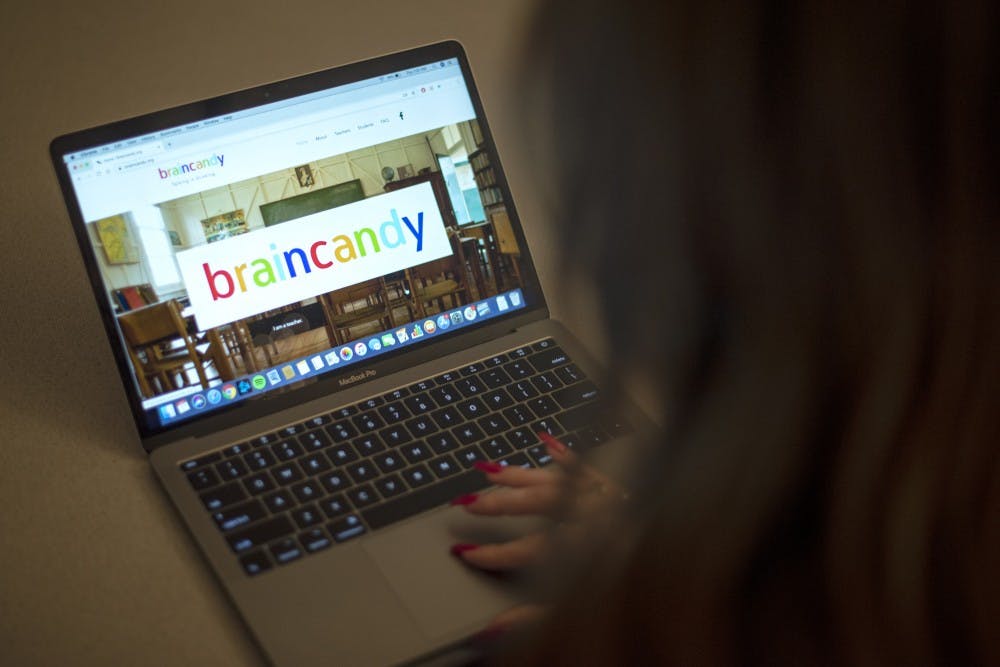An ASU professor has created a platform that allows students to participate in the classroom anonymously.
Mary Lou Fulton Teachers College professor Bryan Henderson developed a new learning platform called Braincandy. He uses Braincandy in all of his classes at ASU and wants it to spread nationwide.
By allowing students to engage in the class anonymously, teachers can conduct a class in a more "open" format, Henderson said. They can propose a question and, instead of raising their hands, students can enter their thoughts and answers without having to actually reveal their identity.
Henderson said this process is beneficial because, through anonymity, students gain a more comfortable experience in the classroom and are able to display their thinking process to the instructor and class without feeling "humiliated."
“I was trying to develop something that made it a little less nerve-racking and intimidating to participate in class,” Henderson said.
This platform, unlike many others, is completely free, making Braincandy accessible to all teachers and schools. Through the analytics gained from the pool of users, Henderson hopes to find the best type of questions to put in the program and format it in the most user-friendly way possible.
James B. Stein, a former student of Henderson and an assistant professor at Dixie State University, said that Braincandy is a platform that makes the class a better learning space. He said it allows the instructor to gauge the “temperature” of the room and deliver the material in a way that students can best understand what they are learning.
“(Braincandy) really acts kind of like a Swiss Army Knife in terms of creating a culture where learning becomes easier for students,” Stein said.
When participating in a class, Henderson said there are times where students don’t feel comfortable asking questions or giving answers to questions. Henderson believes that this "shyness" is because students often don’t feel confident in their own answers.
Henderson said once students begin submitting anonymously, it allows them to gain the confidence they need to ask the right questions and realize their discussion is actually valued.
“It makes the classroom more comfortable when you know that you can play with your ideas and not be judged,” Henderson said.
Braincandy thrives on the integration of user-generated and preexisting questions, and that is where the software comes into play. Unlike other learning platforms, Braincandy does not share its analytics with anyone. It is simply monitored to gain deeper insight into what changes need to be made in order to make the platform the most efficient experience for the class.
“I named it ‘Braincandy’ because the questions are the brain candy,” Henderson said. “It’s the questions that drive the technology.”
Through this platform, students are not pressured to answer and don’t have to worry about whether their answer is right or wrong. The anonymity that comes with the program is so students are more willing to share their thinking, which ultimately allows them to modify their behavior to become more engaged.
Earl Aguilera, one of the co-founders of Braincandy who was a student at ASU at the time, said at marginalized schools being "good" at school can be associated with being a “sellout.” Aguilera said that in these situations, the anonymity behind Braincandy really aids in the learning process.
“The software, as well as the ethos in Braincandy, is really grounded in understanding the relationship between teaching and learning,” Aguilera said.
Braincandy is a unique platform in that it can be changed at any moment. Given the data received from students, the program has the ability to be more detailed and orientated in ways that make the experience easier on both the instructor and the students.
This is most prevalent in the recent changes and upcoming changes that are coming to the Braincandy platform. One of these changes includes a new feature that allows instructors to identify students who use derogatory language when in Braincandy.
While still anonymous, the instructor can click on the message and the screen of that certain student will turn orange, thus allowing the instructor to figure out who it was if necessary.
Another change is that Henderson and his team will incorporate new answering formats for the actual questions that are asked.
It is these changes that will change how students answer questions and engage in discussion and help students perform in a way that is beneficial to the entire classroom.
This platform is being used to a limited degree, Henderson and Aguilera said, adding that educators should use technologies like Braincandy because they can be very helpful.
“(Educational technology) is meant to augment us ... and Braincandy falls in that area,” Aguilera said. “As teachers, it’s important for us to advocate for this type of 'edtech' because that is not only what makes education meaningful but also respectful."
Reach the reporters at ljchatha@asu.edu and follow @alphaluke15 on Twitter.
Like The State Press on Facebook and follow @statepress on Twitter.

Luke Chatham is a Community & Culture reporter and previous Business and Tech reporter. He also worked in the studio production crew for Cronkite News and is currently a freelance reporter and writer for Arcadia News.




